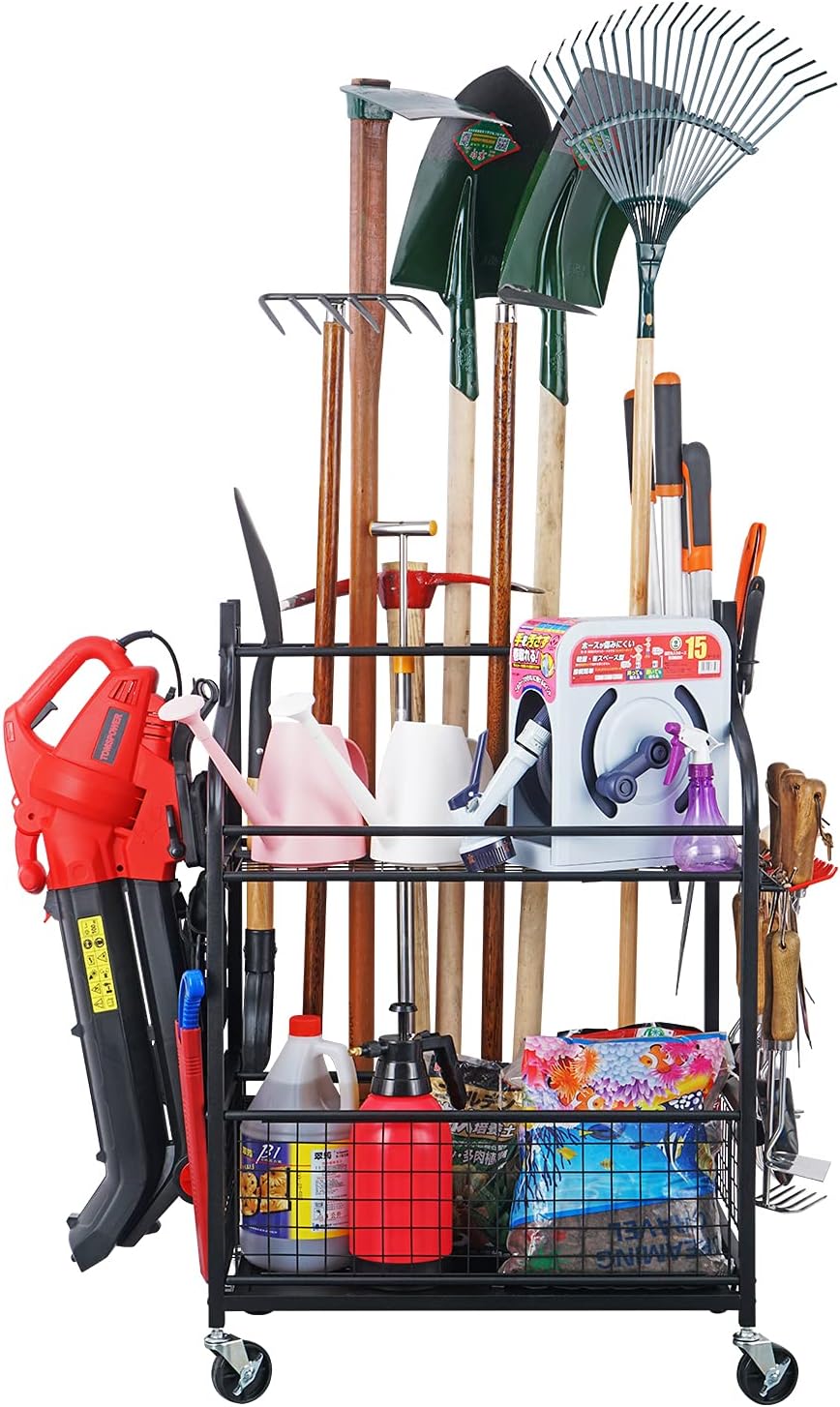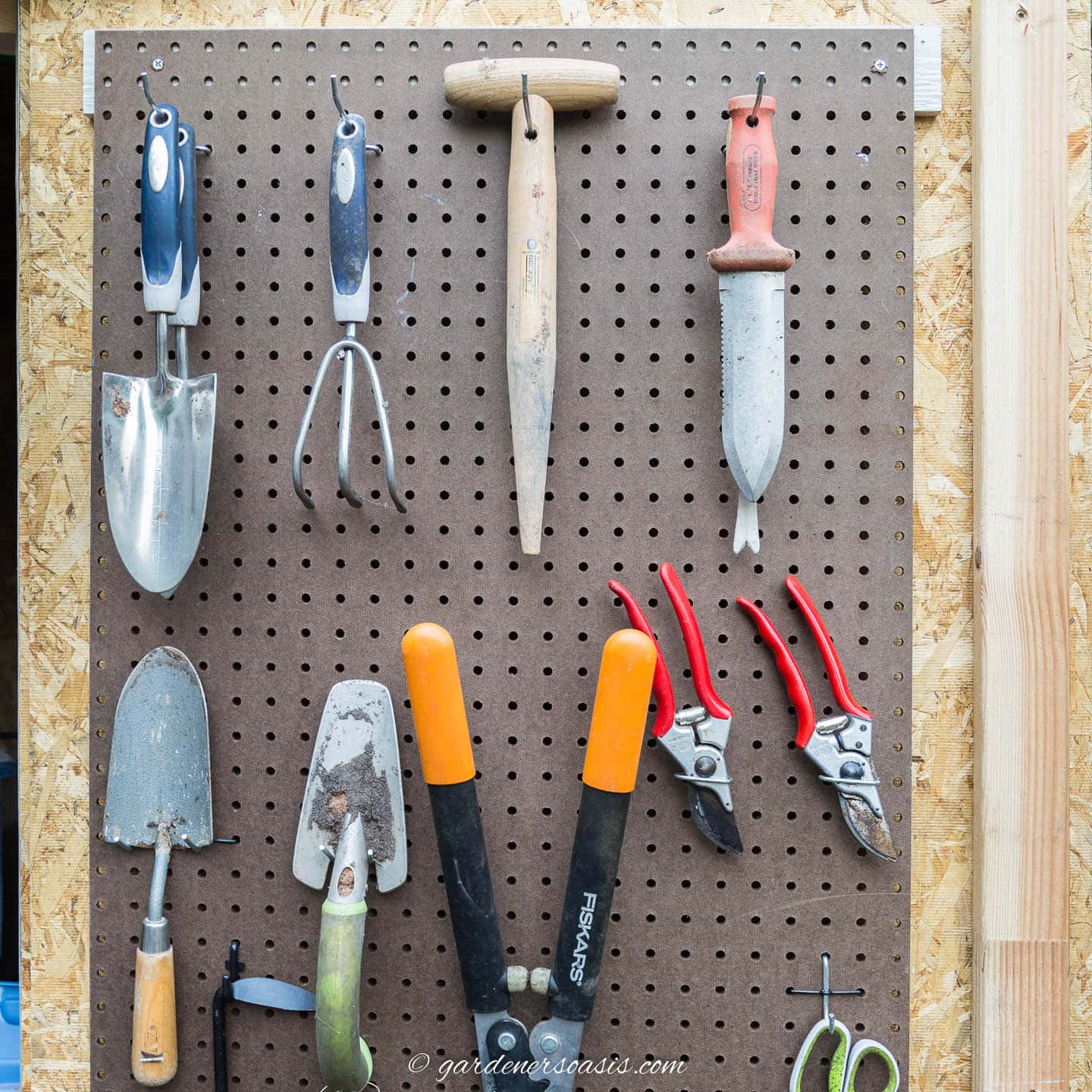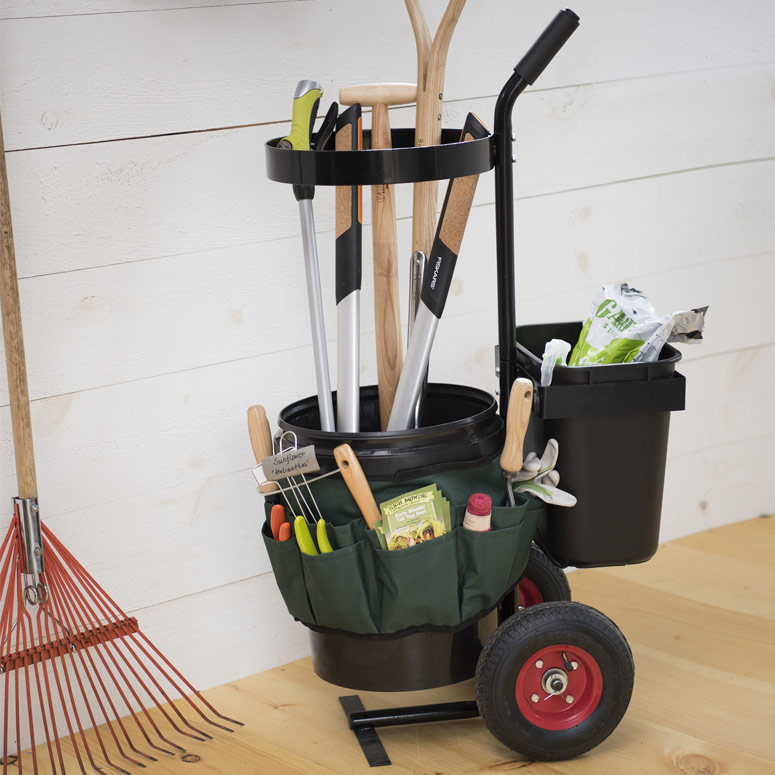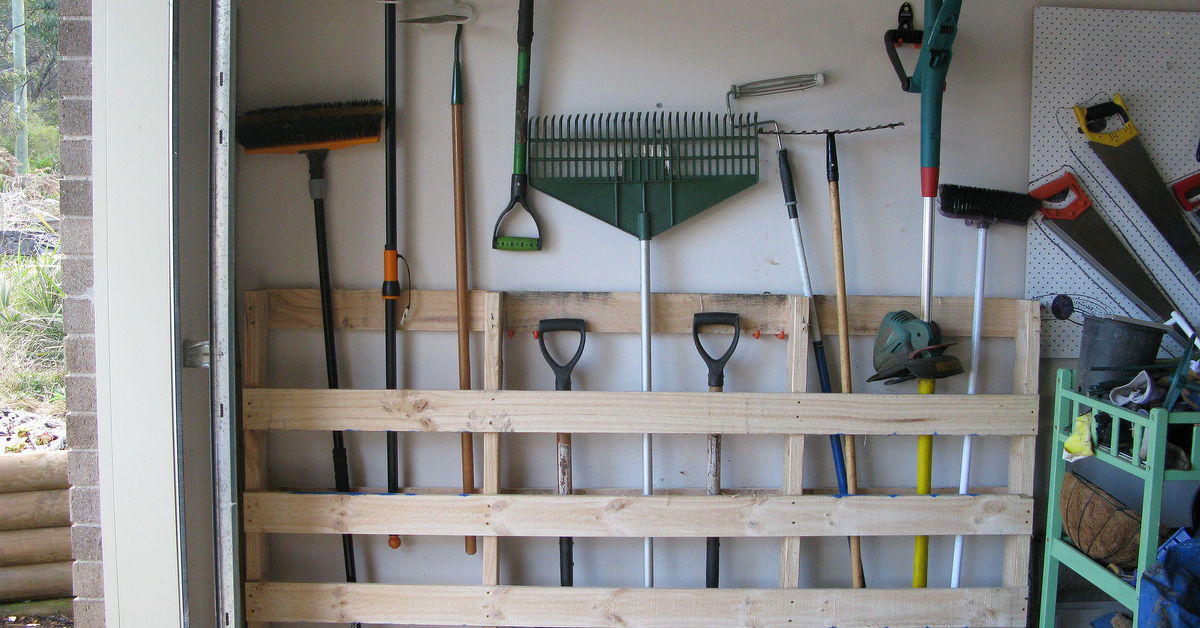Contents
- 1 Garden Tool Storage: Creating Order in Your Green Space
- 2 Storing Long-Handled Tools: Rakes, Hoes, and Spades
- 3 Small Tools: Securing Pruners, Trowels, and Shears
- 4 Mobile Storage Options: Garden Carts and Trolleys
- 5 DIY Ideas for Garden Tool Organization
- 6 Maintaining an Organized Garden Tool Space
- 7 Unveiling the Ultimate Garden Shed
- 8 Frequently Asked Questions
- 9 Author
Article-at-a-Glance
-
Maximize space with wall-mounted racks for long-handled tools.
-
Keep small tools organized with segmented drawers and tool belts.
-
Discover the benefits of a lockable storage shed for all-weather protection.
-
Learn how to set up a pegboard for customizable tool storage.
-
Find out how a garden trolley can simplify your gardening tasks.
Garden Tool Storage: Creating Order in Your Green Space

Every gardener knows the challenge of keeping tools organized. A tidy garden shed or garage not only saves you time but also extends the life of your tools. Let’s dive into the world of garden tool storage and transform your gardening routine into a picture of efficiency and pleasure.
Why Proper Storage Matters
Storing your tools properly does more than just declutter your space. It prevents rust, keeps sharp edges safe, and ensures that your tools are always ready when the roses need pruning or the vegetable patch needs hoeing. Besides that, well-organized tools can save you the headache of searching through a jumbled pile when you’d rather be gardening.
Identifying Your Gardening Tool Collection
Before we start organizing, let’s identify what we’re working with. Grab all your rakes, hoes, spades, pruners, trowels, and shears. Don’t forget those gloves and watering cans! Knowing what you have is the first step to organizing it all.
Storing Long-Handled Tools: Rakes, Hoes, and Spades

Long-handled tools can be awkward to store. They take up valuable floor space and can easily become a tripping hazard if not stored correctly. But with a few smart solutions, like streamlining and maximizing garden space, we can have them out of the way and still within reach.
Wall-Mounted Racks: A Space-Saving Solution
Wall-mounted racks are a game-changer for storing long-handled tools. They use vertical space, which is often underutilized. Installing a rack is simple:
-
Measure the wall space you have available.
-
Choose a rack that fits your space and the number of tools you have.
-
Install the rack at a height that keeps tools off the ground but within easy reach.
Now, you can hang your rakes and spades with ease. Most importantly, they’re out of the way and off the floor.
Magnetic Strips for Metallic Tools
Magnetic strips aren’t just for kitchen knives. They’re perfect for keeping metallic tools like pruning shears or trowels within reach and in plain sight. Just mount the strip on the wall, and your metal tools will stick right to it.
Standing Containers for Stability
If you’re not keen on hanging tools, consider a standing container. A tall, sturdy bin can hold your long-handled tools upright. Make sure it’s heavy enough not to tip over, or secure it to a wall for extra stability.
Small Tools: Securing Pruners, Trowels, and Shears

Small tools can easily get lost in the shuffle. But with the right storage solutions, you can keep them organized and ready for action.
Tool Belts and Aprons for Immediate Access
For those tools you use all the time, a tool belt or apron is incredibly handy. Slip in your pruners, trowels, and gloves, and you’re ready to garden at a moment’s notice. It’s practical and keeps your tools on you as you move around the garden.
Drawers and Bins: The Importance of Segmentation
Drawers and bins work wonders for separating and protecting small tools. For more detailed strategies on storing your garden tools, here’s how to do it:
-
Sort your tools by type and size.
-
Use drawer dividers or small bins to keep them separated.
-
Label each section so you can find what you need quickly.
This way, your small tools are always where they should be, and you won’t waste time digging for them.
Setting Up Your Pegboard
Pegboards are the Swiss Army knife of tool storage. They’re versatile, expandable, and can be customized to fit the needs of any gardener. The first step is choosing the right pegboard. You want one that’s sturdy enough to hold your gardening tools and that fits the space you have available.
Next, you’ll need to install your pegboard. Find a spot that’s easy to access and has enough room for your tools to hang without crowding. Mount the pegboard securely to the wall, ensuring it can support the weight of your tools. A little tip: leave a gap between the wall and the board to make it easier to insert and remove pegs.
Now comes the fun part: arranging your tools. Start by hanging the tools you use most often in a convenient spot. Place heavier items lower down to prevent strain when reaching for them. And remember, the beauty of a pegboard is that you can always rearrange it as your tool collection grows or as seasons change.
One of the best things about pegboards is that they can grow with you. As you acquire new tools, or as your gardening needs change, you can add more pegs and rearrange your board to accommodate your evolving collection. This adaptability makes pegboards a favorite among gardeners.
-
Choose a pegboard that’s made from durable material like metal or hard plastic.
-
Install the pegboard with a gap behind it to make it easy to move pegs around.
-
Arrange your most-used tools within easy reach and heavier tools at the bottom.
-
Consider adding shelves or bins to your pegboard setup for non-hangable items.
Best Accessories for Pegboard Optimization
While pegboards are fantastic on their own, the right accessories can enhance their functionality. Hooks of various sizes can accommodate tools from small shears to large rakes. Bins and baskets can hold smaller items like gloves and twine. And for those tools with no hole to hang, spring clips are your best friend.
Mobile Storage Options: Garden Carts and Trolleys

Mobile storage is a lifesaver for those with larger gardens or for those who like to have their tools at hand wherever they are in the yard. Garden carts and trolleys are designed to be rugged and can handle all the bumps and lumps of garden terrain while keeping your tools organized.
When choosing a cart or trolley, look for one that’s sturdy but not too heavy to maneuver. It should have compartments or a system of organization that makes sense for the tools you use. And, if you can, choose one with all-terrain wheels that can handle the garden path as well as the lawn.
The Convenience of a Garden Trolley
“With a garden trolley, you can carry all your tools, seeds, and even a bag of soil, all in one trip. It’s like having a portable shed that goes wherever you go.”
Imagine this: You’re working on one end of your garden and realize you need a tool from the other side. With a garden trolley, you simply roll your entire tool collection over, rather than walking back and forth. It saves time and energy, so you can focus on the joy of gardening.
Most garden trolleys come with divided sections or can be customized with containers, making them perfect for separating tools from plants or seeds. They’re also easy to clean—just hose them down at the end of the day.
For those who love to garden but struggle with mobility, a garden trolley can be a game-changer. It puts everything within arm’s reach, reducing the need to bend or stretch for tools.
And when it’s time to call it a day, you can simply wheel your trolley back to the shed or garage, keeping everything organized and ready for the next gardening session.
Choosing a Durable Garden Cart
When you’re selecting a garden cart, durability should be at the top of your list. Look for materials like heavy-duty plastic or powder-coated steel that can withstand the elements. Pneumatic tires are a plus for easy rolling over uneven ground. And consider the weight capacity to ensure it can handle heavy loads like bags of mulch or large pots.
DIY Ideas for Garden Tool Organization

Not all storage solutions need to come from the store. With a bit of creativity, you can make your own tool organizers that are both functional and unique to your space.
Pallet Storage: An Eco-Friendly Approach
Old wooden pallets can be upcycled into fantastic tool organizers. Lean one against a wall and use the slats to hang hand tools, gloves, and even pots. Here’s how to make the most of pallet storage:
-
Sand down any rough edges to prevent splinters.
-
Apply a coat of paint or sealant to protect the wood from the elements.
-
Use hooks or nails to create hanging spots for your tools.
-
Add shelves or boxes for smaller items that can’t be hung.
Pallet storage is not just practical; it’s also a statement of your commitment to sustainability and repurposing materials.
Repurposing Old Furniture for New Uses
Another fantastic DIY option is to repurpose old furniture. An unused bookshelf or cabinet can be transformed into a garden tool organizer with a little imagination. Here’s how:
-
Remove any unnecessary shelves or drawers to create space for larger tools.
-
Install hooks on the sides or insides of the doors for hanging tools.
-
Use baskets or bins on shelves to group smaller items together.
This approach not only gives a second life to furniture but also adds a touch of personal style to your garden storage.
Creating Custom Shelving
If you’re handy with tools, creating custom shelving for your garden tools can be a rewarding project. Measure your space, decide on the size and number of shelves you need, and build a shelving unit that perfectly fits your gardening tools and space. You can design the shelves to hold large pots on the bottom and smaller tools on top, making everything easily accessible.
Maintaining an Organized Garden Tool Space
Organization isn’t a one-time task. To maintain an organized garden tool space, you’ll need to develop some best practices for end-of-season tool maintenance, cleaning, and periodic reorganization.
Best Practices for End-of-Season Tool Maintenance
As the gardening season winds down, take the time to clean and maintain your tools before storing them. Sharpen blades, oil moving parts, and clean off any dirt or sap. This not only preserves your tools but also ensures they’re ready to go when the next season rolls around.
Cleaning Tips for Longevity
Keeping your tools clean is key to their longevity. After each use, remove soil and moisture to prevent rust. For tools with wooden handles, a rubdown with linseed oil can prevent splintering and drying out. And for your metal tools, a little bit of oil can keep them moving smoothly and rust-free.
Organizing Tools Post-Season
When the season ends, it’s time to put everything away. Organize your tools by category and store them in their designated spots. This not only makes it easier to find them next season but also helps you keep track of what you have and what might need replacing.
Periodic Reorganization to Fit Seasonal Needs
Your gardening needs change with the seasons, and so should your organization. Periodically re-evaluate your storage setup and make adjustments as needed. Maybe you’ve taken up a new gardening hobby that requires different tools, or perhaps you’ve found a better way to store something. Adaptability is key.
Unveiling the Ultimate Garden Shed

Now that we’ve covered the basics of garden tool organization, let’s talk about the ultimate storage solution: the garden shed. A well-designed garden shed can house all your tools, protect them from the elements, and keep your garden looking neat and tidy.
Explore the Features of a Premium Storage Shed
When considering a garden shed, look for features that will make your life easier. A sturdy frame, lockable doors, and weatherproof materials are essential. Ventilation is also important to prevent moisture buildup, and windows can provide natural light for finding tools easily.
-
Sturdy frame to withstand the elements.
-
Lockable doors for security.
-
Weatherproof materials to protect tools.
-
Ventilation to prevent moisture buildup.
-
Windows for natural light.
One premium option that stands out is the VIWAT Outdoor Storage Shed. It’s designed with durability in mind, featuring a weather-resistant aluminum and metal construction, and offers a compact, space-saving design with plenty of room for all your gardening tools.
Where to Find Your Next Garden Shed
If you’re looking to buy a new garden shed, there are plenty of options available. However, for a combination of quality, convenience, and value, I recommend checking out the VIWAT Outdoor Storage Shed. It’s a solid choice for any gardener looking to protect and organize their tools effectively.
Frequently Asked Questions

How can I prevent tool rust when storing garden tools outdoors?
To prevent rust, store your tools in a dry place and keep them off the ground. If they must be stored outdoors, use weatherproof covers or storage containers. Regularly clean and oil metal tools to protect them from moisture.
Are pegboards sturdy enough for heavy garden tools?
Yes, pegboards can be sturdy enough for heavy garden tools if installed correctly. Use a pegboard made of strong material and ensure it’s securely mounted to the wall with appropriate anchors and spacers. For more information on organizing your tools, check out our ultimate guide to choosing pruners.
What is the best way to store garden hoses?
The best way to store garden hoses is to coil them neatly and hang them from a hose holder or reel to prevent kinks and cracks. Ensure they’re drained of water and stored out of direct sunlight.
Can I modify an existing shed for better tool storage?
Absolutely! You can add shelves, racks, hooks, and even a pegboard to an existing shed to improve its storage capabilities. Consider what tools you have and customize the space to fit your needs.
Do I need to anchor my garden shed?
Anchoring your garden shed is a good idea, especially in areas prone to high winds or storms. It provides extra stability and can help protect your shed and its contents from damage. For more tips on optimizing your outdoor space, consider exploring top trends for creating a modern outdoor space.
By following these tips and investing in the right storage solutions, you’ll have a well-organized garden tool collection that’s easy to maintain and a pleasure to use. Happy gardening!
As any seasoned gardener knows, the right tools can make all the difference in maintaining a beautiful and thriving garden. Shovels, rakes, and hoes are the backbone of garden maintenance, but storing them properly is just as important as using them effectively. Proper storage not only helps to keep your tools in good condition, preventing rust and damage, but also ensures that they are always on hand when you need them. For more detailed insights, consider reading our guide on choosing the right shovels for your gardening needs.




Leave a Reply